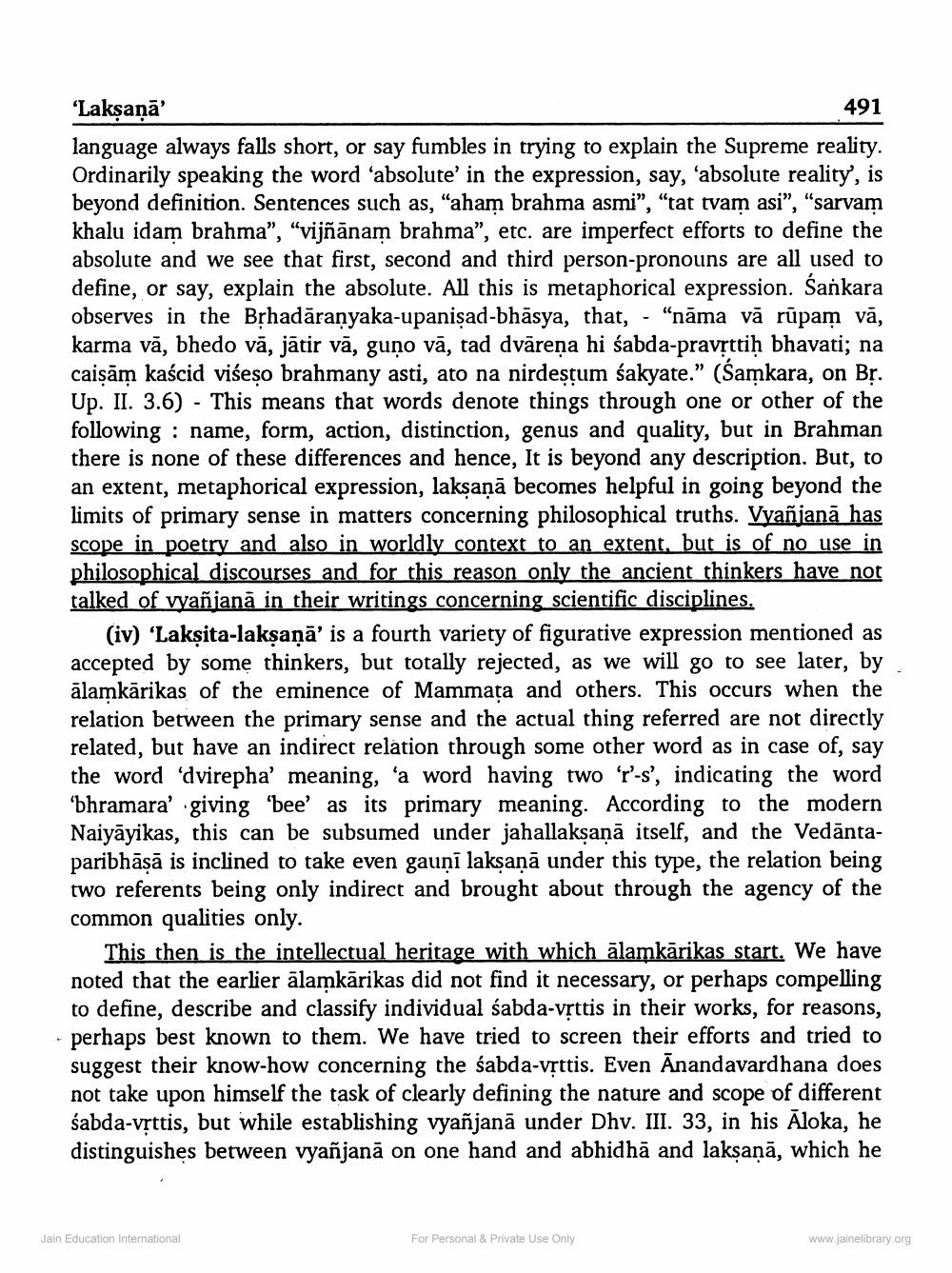________________
‘Laksana'
491 language always falls short, or say fumbles in trying to explain the Supreme reality. Ordinarily speaking the word 'absolute' in the expression, say, 'absolute reality', is beyond definition. Sentences such as, "aham brahma asmi", "tat tvam asi”, “sarvam khalu idam brahma”, “vijñānam brahma", etc. are imperfect efforts to define the absolute and we see that first, second and third person-pronouns are all used to define, or say, explain the absolute. All this is metaphorical expression. Sankara observes in the Bșhadāranyaka-upanişad-bhāsya, that, - “nāma vā rūpam vā, karma vā, bhedo vā, jātir vā, guņo vā, tad dvāreņa hi sabda-pravsttiḥ bhavati; na caisām kaścid višeso brahmany asti, ato na nirdestum sakyate." (Samkara, on Br. Up. II. 3.6) - This means that words denote things through one or ot! following : name, form, action, distinction, genus and quality, but in Brahman there is none of these differences and hence, It is beyond any description. But, to an extent, metaphorical expression, laksaņā becomes helpful in going beyond the limits of primary sense in matters concerning philosophical truths. Vyañjanā has scope in poetry and also in worldly context to an extent, but is of no use in philosophical discourses and for this reason only the ancient thinkers have not talked of vyanjana in their writings concerning scientific disciplines.
(iv) 'Lakṣita-laksaņā' is a fourth variety of figurative expression mentioned as accepted by some thinkers, but totally rejected, as we will go to see later, by ālamkārikas of the eminence of Mammața and others. This occurs when the relation between the primary sense and the actual thing referred are not directly related, but have an indirect relation through some other word as in case of, say the word 'dvirepha' meaning, 'a word having two 'r-s', indicating the word 'bhramara' giving 'bee' as its primary meaning. According to the modern Naiyāyikas, this can be subsumed under jahallaksaņā itself, and the Vedāntaparibhāsā is inclined to take even gauni laksanā under this type, the relation being two referents being only indirect and brought about through the agency of the common qualities only.
This then is the intellectual heritage with which ālamkārikas start. We have noted that the earlier ālamkārikas did not find it necessary, or perhaps compelling to define, describe and classify individual sabda-vrttis in their works, for reasons, perhaps best known to them. We have tried to screen their efforts and tried to suggest their know-how concerning the sabda-vșttis. Even Anandavardhana does not take upon himself the task of clearly defining the nature and scope of different śabda-vrttis, but while establishing vyañjanā under Dhv. III. 33, in his Āloka, he distinguishes between vyañjanā on one hand and abhidhā and laksanā, which he
Jain Education International
For Personal & Private Use Only
www.jainelibrary.org




